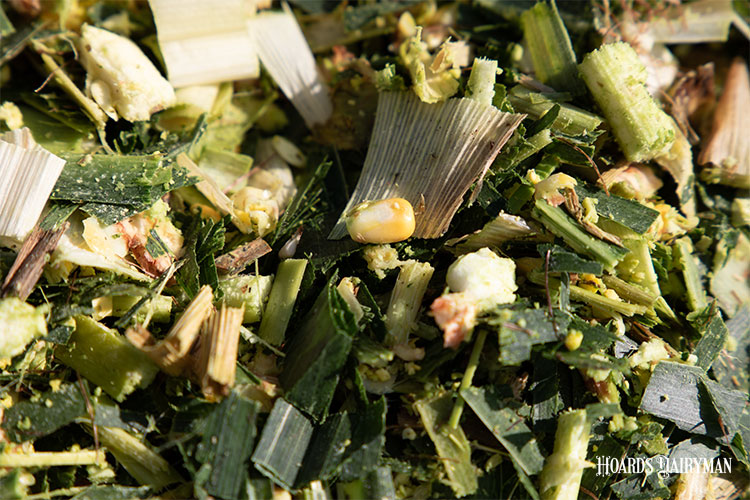
Over the past few weeks, our Goeser household has had a fair amount of sluggish behavior following bacterial and viral-borne illnesses that ran through our family. This is the norm for us and many others across the U.S. this time of the year, as grade-school kids often have less-than-ideal hygienic practices.
To the other parents out there reading the column, you know what I’m talking about. As I write this, my daughter has her hand in her mouth. Picture me shaking my head. Turning toward a dairy nutrition topic, this past year's corn silage seems to be acting sluggish for many people, just like my kids when a virus takes them down.
Corn silage continues to be a hot topic as we’re well into the new forage feeding year. From East to West, the experience with new crop silage has been interesting to say the least. It’s the reason the inaugural “Herd It Here Podcast” launched on February 22 will focus on this topic. To learn more, listen to the conversation between Rick Grant, Corey Geiger, and yours truly in the Herd It Here Podcast “Last year’s corn silage is feeding a bit differently.”

In addition, if you’re in Reno, Nev., for the Western Dairy Management Conference in a few weeks, I’ll be getting into the topic heavily and providing tips and tricks with silage. During that conversation, I’ll also spend a few minutes talking about optimizing our inputs for the upcoming 2023 corn silage crop. But back to the 2022 crop . . .
It’s a highly variable crop in 2022
If your 2022 silage is feeding sluggish, make sure you have a solid handle on its nutritional value and variation. Sluggish feeding value could be due to lower-than-average quality or highly variable nutritional value from week to week.
Please bear in mind that I’m biased, overseeing nutrition efforts at a feed testing laboratory. However, this year’s silage likely warrants a bit more frequent testing to figure out.
Silage out West is down in starch in general. But beyond this, a couple of nutritionists I work with out West have commented they’ve never seen week-to-week nutritional variation like we’re seeing this year.
Carrying this over to the Midwest, several farms that are testing their silage at least weekly are seeing a bit more jumping around in nutritional value, which doesn’t necessarily track with moisture trends. It’s been wild to witness.
One take-home point, do not assume your crop moisture testing is indicative of nutritional value. The potential disconnect between moisture and nutritional value is in line with general Midwest crop observations, where I think the whole-plant moisture and kernel maturity are drifting apart in relation to one another. Giving credit where credit is due, agronomist Bill Mahana challenged me several years back to recognize this corn silage management disconnect.
Speaking to other agronomists and nutritionists, the variable nature we think is attributable to a couple of factors from last year’s growing season:
- Expensive crop inputs
- Highly variable growing conditions, even within a county or an individual farm’s footprint
Follow this checklist
Bringing this article home, here are several basic check boxes for staying on top of your silage and avoiding sluggish performance.
Check moisture several times per week, and work with rolling trends to update moisture values in feed management software.
Silage starch content — ensure you and your nutritionist have a handle on this important metric. Whole-plant corn silage is a blend of the ear and stover. The ear and grain drives the starch content, and grain yields within the field and between fields may have been more widely variable last year. If so, this will materialize in your silo.
Beyond starch content, work with your nutritionist to track starch and fiber digestibility. Starch digestibility will increase over time as the silage ferments, but fiber digestibility is set like concrete. To use a cliche, it is what it is. If starch digestibility is sluggish, just hang on and it’ll get better. If fiber is sluggish, then we need to get creative.
Drawing to a close, I hope your silage is full of energy like my kids when healthy. However, if your silage is sluggish in energy, delve into the factors discussed here with your nutritionist to get a solid handle on what’s dragging in your herd’s diet.








